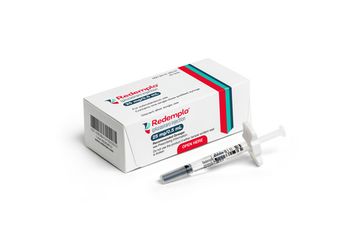
Increased Use of GLP-1 Drugs Adds to Navitus’ Drug Spend for 2023
The switch to biosimilars helped Navitus clients offset increased utilization in the non-specialty category and the introduction of higher-cost specialty drugs.
Overall, Navitus’ commercial clients saw a 6.8% increase in their prescription drug trend in 2023, according to the company’s
“The biggest thing that stands out is non-specialty growth,” Ryan Schmidt, associate director, client financial support of Navitus, said in an interview. “We’ve been doing this for quite a few years, and this is the first time in a while that non-specialty drugs have exceeded specialty growth.”
The Navitus drug trend is calculated by comparing the net total cost per-member per-month (PMPM) for 2023 with that for 2022. Net cost PMPM represents full-year data for total member copays and plan paid amounts minus manufacturer rebates and fees. This value is divided by the total number of members and by 12 months of the year.
About 29% of Navitus’ commercial clients paid less for prescription drugs in 2023 than they did in 2022, even with inflation and the growing use of medications such as anti-GLP-1 drugs. Clients new to Navitus saw an average of 11% reduction in costs in 2023 compared with the year before with a different pharmacy benefit manager.
Non-Specialty Drug Spending
Non-specialty drug costs for Navitus clients have increased by 7.9% compared with 5.7% for specialty drugs. One of the largest impacts on drug spend is the growth of use in anti-glucagon-like peptide-1 (GLP-1) drugs to treat patients with diabetes. (The GLP-1 drugs are classified as non-specialty.) The use of GLP-1s for weight loss was not included in this analysis.
“We didn’t include costs for GLP-1 drugs for weight loss because many don’t cover these drugs for that indication,” Schmidt said.
For Navitus clients, the trend for GLP-1 drugs increased 1.7% in 2023 even though less than 3% of members used these medications. If the GLP-1 drugs were considered separately, total trend for Navitus clients would have increased 5.1%.
Sales of GLP-1 therapies have grown by 58% in 2023 compared with 2022, with the diabetes drugs Novo Nordisk’s Ozempic (semaglutide) and Lilly’s Mounjaro (tirzepatide) driving most of the volume growth, according to IQVIA data. Sales of Ozempic specifically have grown 78.7%. The
In the United States, about 12% of adults have used GLP-1 drugs either to treat diabetes or to lose weight, according to a May
Going forward, Schmidt said there will likely be increased discussions about how to cover the GLP-1 therapies, especially in light of the added benefit they may have for some patients. Spending on the GLP-1 class of therapeutics is expected to grow by 378% to $8.1 billion by 2027, according to IQVIA.
Increased attention has been on the GLP-1 class of medications after semaglutide was approved as Wegovy and tirzepatide as Zepbound to treat obesity. As more data becomes available about how GLP-1 therapies impact the metabolic system, demand and use is expected to grow. Obesity is associated with type 2 diabetes, cardiovascular disease, the fatty liver disease nonalcoholic steatohepatitis (NASH) and chronic kidney disease.
Research is ongoing about how GLP-1 treatment can impact these conditions. GLP-1 agonists have been used off label to treat patients with NASH. Additional indications for semaglutide and tirzepatide are expected to increase the demand for and use of the GLP-1 therapies.
Wegovy has been approved to reduce the risk of cardiovascular death, heart attack and stroke in overweight patients with heart disease. Novo Nordisk last month released
In June 2024, Lilly announced
Also adding to increased non-specialty spending in 2023 was the introduction of new vaccines to prevent RSV. In 2023, the first two vaccines or respiratory syncytial virus (RSV) were approved for older adults: Arexvy and Abrysvo. GSK’s Arexvy, approved for adults over the age of 60 in early May 2023. The second adult vaccine was approved a few weeks later. Pfizer’s Abrysvo was also approved to prevent RSV in infants. In June 2024, the FDA expanded Arexvy’s approval for those 50 to 59 years of age.
Specialty Drug Spending
Within specialty drug spending, Navitus clients saw an overall cost trend of 5.7%. Decreases in unit costs, however, were offset by increases in utilization for specialty drugs, including increased use of Dupixent (dupilumab), which is approved for five indications including atopic dermatitis and eosinophilic asthma.
However, the launch of biosimilar products for Humira (adalimumab) reduced drug spend for clients in 2023. Humira is a biologic that treats inflammatory diseases such as arthritis and Crohn’s disease. More than 10 biosimilars to Humira were launched in 2023, and in October 2023, Navitus said it would favor the low-WAC (wholesale acquisition cost)/low rebate biosimilar options, including adalimumab-adaz, adalimumab-fkjp and Hadlima.
“In the first half of 2023, we saw most of our savings from rebates almost doubling for Humira,” Schmidt said. “Those savings were passed on to the plans and they saw a fairly big decrease in the amount of money spent on that product. In the second half of the year, some people started to move over to the biosimilars, which lowered costs even more
In the report, Navitus officials said these strategies resulted in a 20% reduction in total costs in 2023, which helped to offset increased unit costs for other products, including Stelara (ustekinumab), Tremfya (guselkumab), Taltz (ixekizumab), and Skyrizi (risankizumab).
Navitus expects client savings to increase in 2024 because it expects to shift more patients to biosimilars. In June 2024, the branded Humira was removed from Navitus’ formulary. “In 2024, we’re seeing the industry start to add biosimilars more holistically,” Schmidt said. “We’re going see prices drop significantly. And instead of being tied to rebates, plans will see upfront savings of as much as 80%.”
Newsletter
Get the latest industry news, event updates, and more from Managed healthcare Executive.























































